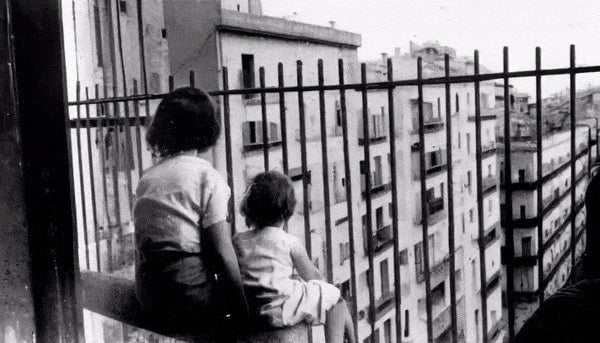Synthetic memories: Piecing together the past with AI
A fascinating experiment to help early-stage dementia patients uses AI image generators to visualize old memories.

Generating the past
Suggested Reading
Picture your earliest memory—the who, what, and where of it. How do you feel when you remember it?
Related Content
Do you have any archival evidence of it? A photograph, a home movie, or, if you’re young enough, a social media post about it?
What if you didn’t? How would you describe the scene? Which details would you be sure to include? And how would you feel if an image-generating bot making use of artificial intelligence was able to visualize your memory for you?
Welcome to the concept of synthetic memories. They aren’t photographs. They’re visual representations of what we can remember. And, using futuristic-sounding technology that’s actually available in the present, they can help us piece together elements of our past.
Let’s visualize it.
Pop quiz
Which of the following is not an AI image generator?
A. DALL-E
B. Midjourney
C. Character.AI
D. Stable Diffusion
Remember to scroll to the bottom to get your answer!

Pau Garcia is the founder of Domestic Data Streamers, a design studio in Barcelona; he’s a bit of a technophile. When a friend learned he was experimenting with new AI image generators like DALL-E, she asked him to create an image of her playing with her father, who died when she was young. She was moved by the result, and Garcia by her reaction. He and his colleagues started talking about the technology’s potential with anyone who would listen. A social worker at a nursing home soon approached the studio with an idea: Use the technology to help elderly patients with dementia to visualize their early memories.
The gif above is the “synthetic memory” Garcia and his team produced for a 96-year-old Catalonian woman in the early stages of dementia. It depicts her recollection of being with her mother on an apartment balcony overlooking La Modelo, the infamous prison in the center of Barcelona, where her father was a political prisoner during the Francoist dictatorship; from the balcony, they could see him through the window of the prison. The woman articulated this memory in her native language of Catalan, which first had to be translated into English in order to prompt the image generator.
Note: The image-generating bots in widespread use today are biased toward American English and Western perspectives, because of their provenance. (“That’s probably why [we need] a lot of different models,” Garcia says.) For now at least, be aware of these biases and use Americanized English in your prompts for the best outcomes.
Quotable
“It’s very different to understand memory from a Brazilian perspective than from a Spanish perspective, than from a Chinese perspective. How we relate to memory and the power it has in our life, and the memory of our ancestors, is totally different.”
—Designer Pau Garcia, founder of Domestic Data Streamers, talking about synthetic memories on the latest episode of the Quartz Obsession podcast.
Synthetic memories: Q&A
Is this ethical?
Garcia and his colleagues only worked with patients in the early stages of dementia, when they were more able to understand how the images are made and how they’re different from photographs or home movies. The team demonstrated the technology up close before using it to create the patients’ synthetic memories. (The image below—which is an actual photo, not an AI-generated image—shows Garcia, right, leading one such visit.)

Was there any effect on patients?
Patients who sometimes had no memory of the care workers who checked on them each day often remembered workers who had been involved in the process of making their synthetic memories, Garcia says. Care workers reported an increased connection with the patients as a result.
Patients on the whole responded positively to the experience of creating their synthetic memories. According to Alzheimer Scotland (pdf), a dementia charity, “Remembering our early childhood experiences is usually an enjoyable activity, and to some people with dementia it can be the only way that they can make contact with their own identity.”
Will the concept of a synthetic memory be useful to newer generations?
In many cultures, our lives are arguably over-documented now, thanks to social media. But typically we post about celebrations, tragedies, food we eat, or places where we travel, Garcia notes. That still leaves plenty of memories, of small moments or otherwise, that go undocumented.
Poll
What would you do with a printout of a synthetic memory?
- I would store it or share it along with other mementos and family keepsakes
- I would take a pic with my phone and upload it to social media, though I now realize this sounds weird
- Printers still exist??
Tell us your vote, it’ll just take one digital second.
💬 Let’s talk!
In our last poll, about drive-thrus, 52% of you said you opted for the sit-down experience, 41% of you dabbled in getting your meals on four wheels, and 7% use the lane mostly for coffee.
Today’s email was written by Heather Landy (earliest memory: playing with her dad on the living room floor and feeding him pretend oats while she imagined he was a horse) and edited by Susan Howson (earliest memory: a mobile of fish made out of calico fabric that hung above her changing table).
The answer to the quiz is C., Character.AI, which is a chatbot; it generates text responses, not images, and it’s pretty fun.